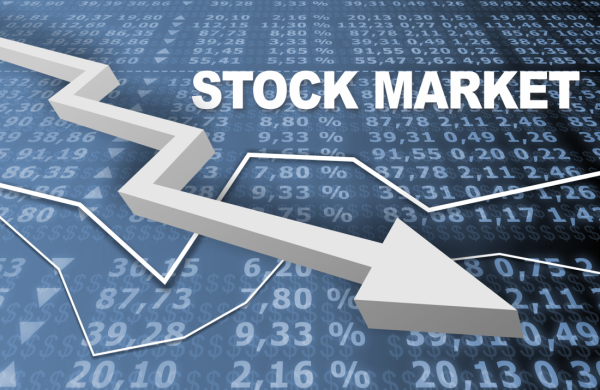Adani Stock Market Saga: A Deep Dive into Controversy and Implications
The Indian stock market is always a dynamic and unpredictable domain, but no episodes have gained as much attention as the Adani Group controversy. Being one of India’s largest conglomerates, the Adani Group has been at the forefront of economic activity, but its stock market trajectory has also been fraught with challenges. This article analyzes the Adani case, discussing the intricacies of its impact on the stock market and its broader implications for investors and the Indian economy.

Understanding the Rise of the Adani Group
From the establishment of infrastructure to energy, logistics, and beyond, Gautam Adani has built a seemingly unshakeable stronghold within sectors through his Adani Group. It has been, after all, the flagship of Adani Enterprises, Adani Green Energy, and Adani Ports companies that has played a prime role in India’s growth story. Its stocks, over time, have skyrocketed and, thus, make it the darling of retail as well as institutional investors.
But rapid expansion often attracts closer attention. Repeatedly, debt levels, corporate governance, and valuation metrics concerning the company have raised warning signals with market observers. Its too-close relationship to political outfits has also fanned the perception of preferential treatment, an added layer to the already complex public persona.
The Controversy: What Happened?
Issues at the Adani Group began with allegations of stock manipulation and inappropriate accounting. An international research firm had written a report that the group was inflating share prices through offshore shell companies and other opaque mechanisms. Within days, this news would shake the market and erase billions of dollars in market capitalization.
There are questions also that the group itself has followed the norms that the regulators require of corporate groupings. An investigation is instituted by the Securities and Exchange Board of India (SEBI) against these allegations which deepens the glare upon the Adani Group. Although the Adani group has always denied each charge leveled, the row emphasizes the need for openness as well as responsibility in corporate dealing.
Effects on Stock Exchange
The Adani Group’s controversy has had a cascading effect on the Indian stock market. The Adani Group is one of the largest contributors to key indices like the Nifty 50 and Sensex, so any significant movement in Adani stocks impacts overall market sentiment. Immediately after the allegations, the Adani stocks saw a sharp sell-off, resulting in the erosion of investor wealth and triggering a broader market correction.
It has primarily been the retail investors, who had invested in the stocks when it was on a bull run, who have faced significant losses. Mutual funds and FII also re-balanced positions, which increased volatility even further. The controversy has generated an argument for the effectiveness of the Indian regulatory oversight and whether such norms need to be further tightened to protect investor interest.
Broader Economic Implication
Beyond the immediate market impact, the Adani case has broader implications for India’s economic landscape. As a key player in critical sectors such as renewable energy and infrastructure, the performance of the Adani Group is closely tied to India’s developmental goals. Any protracted instability within the conglomerate could thus hinder progress in these areas, affecting economic growth and job creation.
This controversy also carries reputational risks for India’s corporate ecosystem. When the country is presenting itself as a global investment destination, incidents like this can scare off foreign investors and raise questions about corporate governance standards. For India to maintain its growth trajectory, it becomes necessary to address these systemic issues.
Lessons for Investors
The Adani case is worth noting for the lessons learned in terms of investing in the stock market. This means doing a proper check and balance on any firm one would be willing to put his money into. Even the most enticing high returns attract high risks. This should not make one commit funds until all these have been checked into account.
The other strategy remains diversification. Diversification helps reduce risks as a high concentration of investment in one sector or a company may expose investors to huge losses, as in the case of the Adani episode. A diversified portfolio can cushion market shocks and ensure stable returns over time.
Last but not least, the current controversy underlines the urgency of investor awareness and education. With the rise in retail participation in India’s stock market, ensuring adequate access to information and the perception of risk is important to the investor. It must be a collective effort for regulatory bodies and market participants to provide a culture of transparency and accountability.
The Way Forward
For the Adani Group, rebuilding investor confidence will be a long and arduous process. Enhancing corporate governance practices, improving transparency, and addressing regulatory concerns will be key steps in this journey. The group’s ability to weather this storm will depend on its commitment to reform and its willingness to engage with stakeholders.
The controversy is a wake-up call for the Indian stock market. Building up regulatory frameworks, ensuring compliance norms are implemented in time, and creating an effective investor protection mechanism would be vital to maintaining market integrity. As the Indian economy grows, the resilience and transparency of the market ecosystem will be key to sustaining investors’ trust.
Conclusion
The Adani saga in the stock market serves as a harsh reminder of the intricacies and difficulties present in the world of investing. Controversies like these may disturb market confidence, but they also help in introspection and reforms. The lessons drawn for investors, regulators, and corporate entities alike from the case of Adani are worth their weight in gold to strengthen a more robust and transparent financial ecosystem.
Internal link:- a2znew






